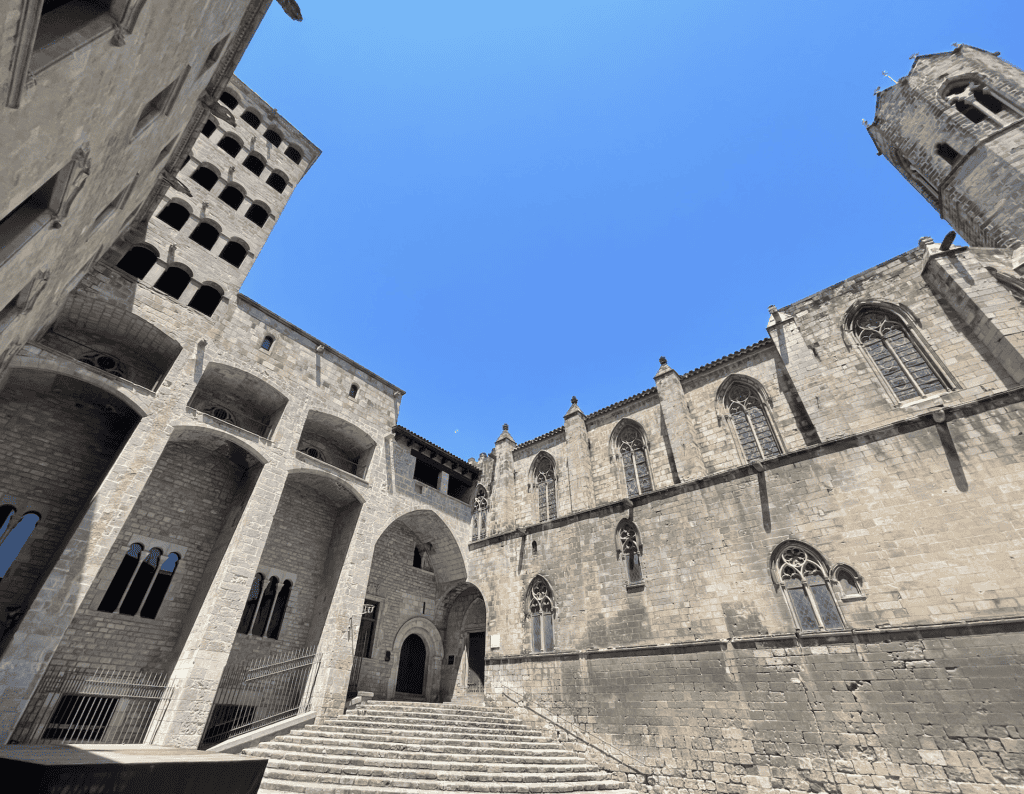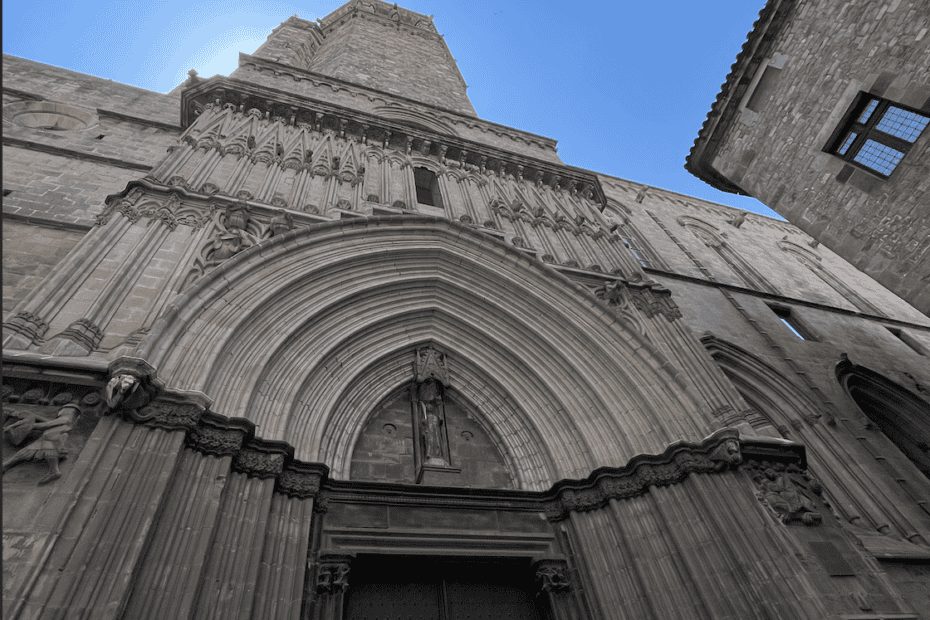Barri Gotic began 2000 years ago as the Roman colony of Barcino. Since then, this area has been built from the ground up several times. Most buildings are from the 13th through 15th century featuring Gothic architecture that the quarter and namesake are best known for.
Gothic architecture comes from a nomadic Germanic group called the “Goths” that roamed from 300 B.C. to early 400 B.C. during the Roman rule. This distinct style is known to mark the beginning of what would be considered the “Medieval Times.”
The Gothic Quarter is considered significant for various reasons. The Placa del Sant Juame, hosts the two most important government buildings for the residents of Barcelona and Catalonia. These are the City Hall and Palau de Generalitat. The City Hall is where all issues of the Barcelona city are handled. Palau deals with country-wide issues and the conflicts between Catalonia with Spain in its fight for independence. Protesters stand in front of the City Hall to curse and shout at the Palau de Generalitat whilst waving Catalan flags. Others protest local issues from Palau de Generalitat towards City Hall.
Still maintaining their original character, many Gothic buildings have seen reconstruction around 1000 years later. The purpose of this reconstruction was to display invincibility and deep culture for the annual World Fairs. These massive celebrations flaunted Barcelona to prominent world leaders, highlighting the riches and strengths of Spain.
The most recent reconstruction of the Gothic Quarter occurred prior to the 1992 Summer Olympics. The harmonic combination of present and past architecture preserve the great beauty of Barcelona. The city’s rich is stored within the walls of places such as the Gothic Quarter.


Nightlife Fashion
Camille Molten (Journalism), Emma Wisler (Mass Communications), Marisa Jones (Advertising), Mia Lutrzykowski (Visual Communications)
